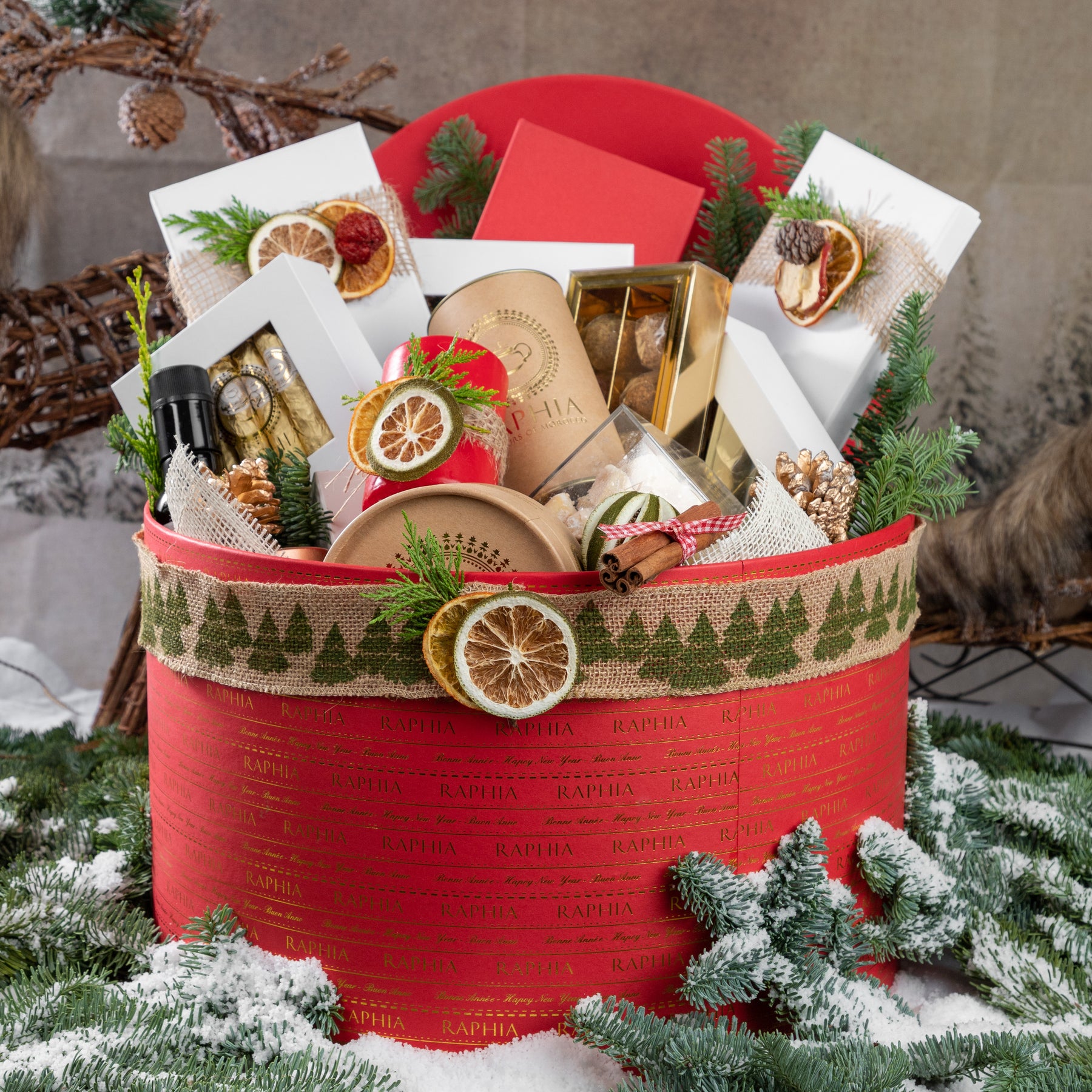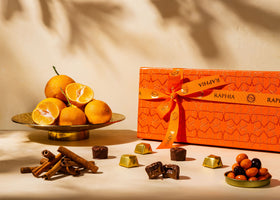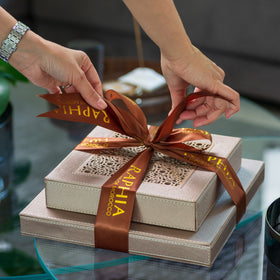
The Colours of Christmas
Colour Symbolism at Christmas
The festive season is approaching and with it the annual traditions of gift giving, carols, Christmas markets, exchanging cards and of course, Christmas trees and decorations. Whether you prefer to deck your halls with opulent shimmers of gold and twinkling lights or boughs of holly and a timeless red and green theme; it is undeniable that the colours of Christmas are an important and magical part of this time of year.
At Raphia HQ we have been pondering the meaning and significance of the colours of Christmas especially as our own Christmas Collection has been inspired by nature and the spectacle of woodland colours.
Traditionally, the colours of Christmas are known to be red and green. However, several other colours are also associated with the festivities, each with their own purpose, meaning and significance. A blend of history, legend, religion, popular culture and marketing too! Here’s what we have discovered.
Green represents life and hope.
Some shades of green have a particularly strong association with Christmas such as evergreen.
Legend has it that evergreen branches, mistletoes and holly leaves were used to deck-up houses during the cold, dark winters. A reminder that winter would pass and eventually, the brighter spring days would arrive. In Ancient Rome people exchanged evergreen branches as a symbol of good luck. Many Christians believe green represents the eternal life of Jesus Christ just as evergreen trees remain green the whole winter long.
Some scholars date the tradition of green at Christmas to the 1300s, when churches presented Miracle Plays. Religious plays that were meant to educate a mostly illiterate public who could not read the bible.
Since apple trees were barren in winter, churches would instead bring in pine trees and fasten apples to their branches to represent the Tree of Good and Evil. Over time people copied this practice in their own homes and the tradition
of the Christmas tree was born. With so many reasons to display greenery during the winter, it didn’t take long for the colour to catch-on as a symbol of the festive season.
Red represents love, courage and romance. It is a powerful colour also associated with spiritual awakening.
As Christians believe green represents the eternal life of Jesus Christ, likewise red represents the blood shed by Christ during his crucifixion. It is also the colour of holly berries and some believe the holly wreath with its sharp pointy leaves first represented the crown of thorns worn by Christ on the cross—the little red berries symbolising drops of blood.
Red also became one of the most symbolic colours of Christmas as it is the colour of a Catholic Bishop’s robes and would have been worn by the third Century Bishop Saint Nicholas who was celebrated for his charitable work amongst the poor.
During the American Civil War, cartoonists depicted Saint Nicholas as a jolly, rotund, smiling man who wore a red suit that was lined with white fur.
In 1931 the Cola company hired Haddon Sundblom, a Michigan born illustrator, to bring Santa (not someone dressed-up as Santa) to life in magazine ads. The campaign showed the now iconic image of Santa with his red Santa Claus coat merrily drinking a bottle of coke, delivering presents and interacting with children. It ran for over 30 years from 1931 to 1934—entrenching red in our collective Christmas imagination.
Also Read- A Deliciously Magical Woodland Christmas
Gold represents light, wealth and sovereignty.
One of the quintessential Christmas colours, gold symbolises the illuminating Son of God and brings light where there was once darkness. In biblical times gifts of frankincense, myrrh and gold were only given to kings and one of the Three Wise Men gifted the Baby Jesus with gold, reinforcing the prophecy that Jesus Christ is King. Traditionally gold is the colour used to show the star that the Wise Men followed.
It is said that the tradition of exchanging presents is to commemorate this day. And gold decorations and gifts of gold are still customary as they continue to signify luxury, prosperity and royalty.
Gold is also the colour of sunlight which is critical during the cold mid winter months and is represented by the gold hues of a roaring fire that provides much needed warmth.
Blue represents purity, hope and peace.
In medieval times blue dyes were precious and more costly than gold. Only royalty and the wealthy could afford to wear blue garments. It is one of the significant Christmas colours as it represents the Virgin Mary and the rich blue robes she was often depicted wearing. This demonstrates her profound importance as the mother of Jesus Christ. Blue also symbolises the colour of heaven and a clear sky.
White represents unity, innocence and goodness.
Nothing is more Christmassy than seeing your world transformed into a winter wonderland. Everyone wants a classic white Christmas. Cue blankets of white snow, ice skating and the wonderful Bing Crosby holiday song “White Christmas”.
The significance of the colour white dates to pagan times and the winter solstice celebrations. A triumph of good over the forces of evil which is symbolic of Christmas festivities.
In Christian traditions, white symbolises the coming of Christ’s light into the world.
During Mass, or Holy Communion the white wafers that are reverently consumed represent the body of Christ. A white cloth is also used in most Christian churches to cover the altar during Christmas services. White is also considered welcoming and peaceful. Christians adorned their homes with white to represent the welcoming of Jesus’ birth.
Purple represents Royalty and celebration, wisdom and devotion.
Purple is often associated with creativity and imagination which links in perfectly with the Christmas period. In some cultures, purple is also associated with spirituality, high vibrations and a sense of the magical.
It is the official colour of Advent, observed on Sunday, 3 December and lasting 4 weeks. This deeply spiritual period before Christmas is when the faithful go through a period of abstinence and penance called the Nativity Fast in preparation for the birth of Jesus on December 25th. During Advent purple cloths and candles are used to adorn the church altars.
Christmas is a time to reflect and celebrate the year that has passed, while looking forward to the new year. It is a time to spend with loved ones, enjoy the company of friends, and be grateful for what you have. And, while it is important to keep the spirit of the festive season alive, it is also important to remember what the colours of Christmas represent, and why they are so important. As the year draws to a close, we should celebrate not only what we have to be grateful for, but also what we have learnt and experienced.




Leave a comment